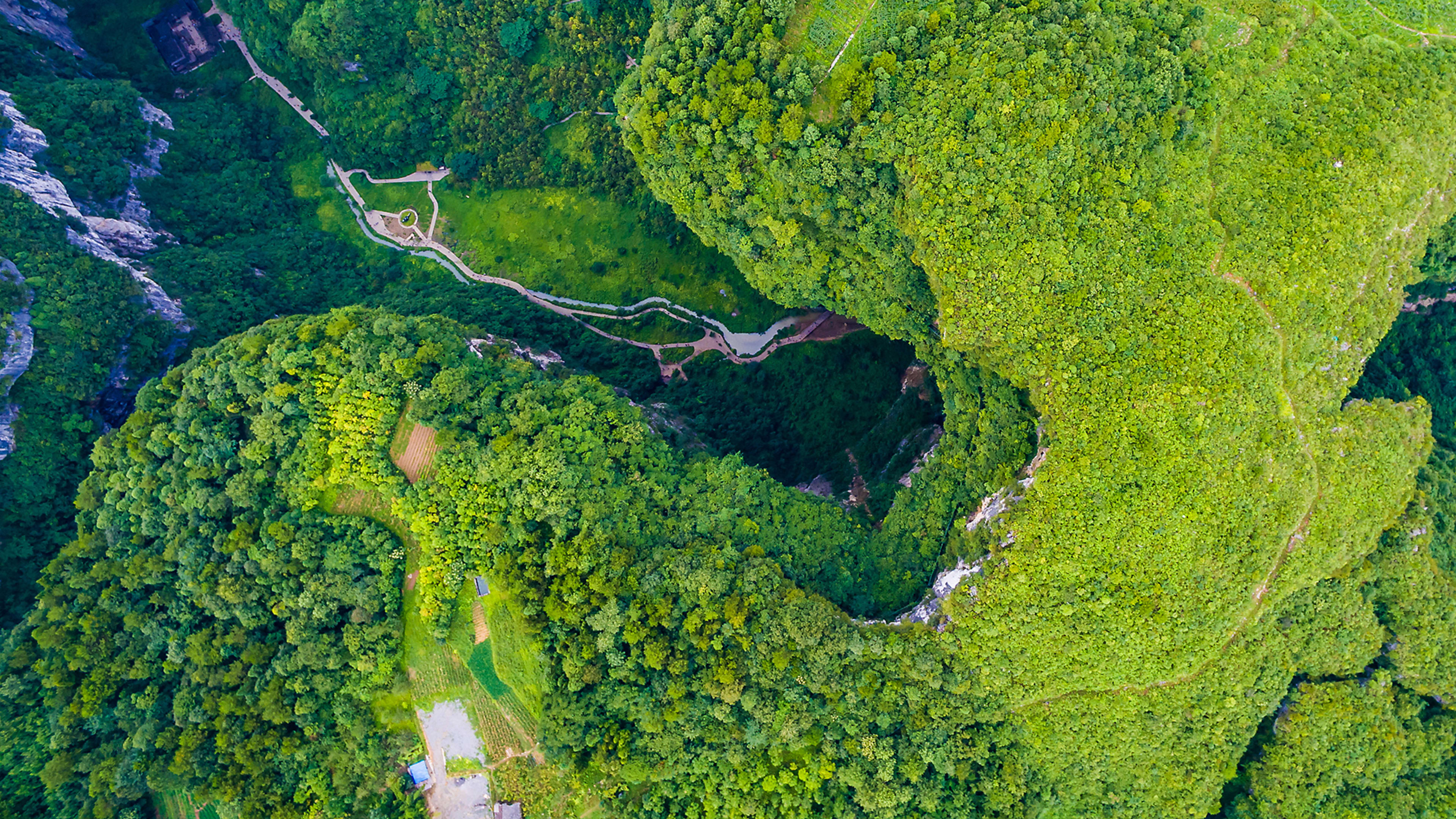In May, a team of spelunkers rappelled into the dark heart of a 630-foot-deep sinkhole in China’s Guangxi region. Near the southern border, Guangxi is home to a landscape of mountainous rock, formed into towering domes, etched with ridges, and steeped in pools of jade-green water and a lush thick of trees.
It is among China’s most beautiful terrain. It is also marred by at least 30 giant, sunken swaths of earth—tiankeng, or “heavenly pits,” in Mandarin, scattered like beads across the countryside.
A waterfall of 188 meters high and 30 meters wide in Guangxi, China. pic.twitter.com/rIcnMDR69i
— Lijian Zhao 赵立坚 (@zlj517) April 21, 2022
Xianggong Mountain is located between the Mural Hill and Yellow Cloth Shoal in Xingping Town of Yangshuo, Guangxi of China. Xianggong Mountain is about 28 km from Yangshuo and 57 km from Guilin. The mountain is a popular tourist destination beloved by enthusiastic photographers pic.twitter.com/ytAa2QW04X
— The Silk Road (@thesilkroad) May 24, 2022
Rice terraces in early morning mist in Guangxi, China | Photography by ©Thierry Bornier pic.twitter.com/TLIr79hcyR
— Piclogy (@Piclogy) April 5, 2022
But this newly discovered sinkhole—deep enough to swallow the U.S.’s tallest national monument, the 630-foot-tall Gateway Arch in St. Louis—houses an even more majestic world. At its bottom, the expeditionists found a flourishing prehistoric forest, with 130-foot-tall trees branching skyward to a faraway circle of sunlight. Their roots dig into a tangled growth of forest floor that could bury a person up to the shoulder.
Blooming amidst the flora and fauna are ferns, wild bananas, fig fruits, and rare square-shaped bamboo shoots—one stalk with a large bite taken from it, explorers told the Guangxi Daily news.
“Giant sinkhole with a forest inside found in China” https://t.co/oQ4bLL1cDY pic.twitter.com/csuUvxHNd3
— pourmecoffee (@pourmecoffee) May 11, 2022
As described to Chinese news outlets, it sounds like a near-mythical realm—a fantasy kingdom of Narnia, or the highlands of Middle Earth—and its promise for biologists and geologists is no less thrilling. Scientists believe the forest could harbor thus unknown plant or animal species, as sinkholes can offer an oasis for botanical life. Such “ancient” or “primitive” ecosystems have never been disturbed by humans. And they are natural jewels for study, offering a glance at what our planet might’ve looked like in primeval times, devoid of humankind’s intrusion.
“I wouldn’t be surprised to know that there are species found in these caves that have never been reported or described by science until now,” Chen Lixin, who led the trek through the sinkhole’s forest, told China’s Xinhua news.
30th giant karst sinkhole discovered in south China's Guangxi pic.twitter.com/52ZxFnyuWF
— CGTN (@CGTNOfficial) May 11, 2022
Guangxi is one of the world’s richest treasure troves of karst topography—found mostly in China, Mexico, and Papua New Guinea—where dramatic landscapes are formed by eroding underground bedrock. In such climates, rainwater runs first through soil—becoming gradually more acidic as it saps carbon dioxide from the earth—and then flows through cracks in the bedrock, hollowing it away into sprawling webs of limestone chambers, pillars, bridges, and tunnels. If the chambers grow large enough, they collapse inward and a sinkhole is born.
According to NASA, 13% of China is karst topography, including the world’s largest sinkhole, Xiaozhai Tiankeng, at 2,172 feet deep in Chongqing. Set upon an enormous underground river, it also houses a robust forest ecosystem connected to a network of caves, much like Guangxi’s site—which is named Shenying Tiankeng, for the way its cliffside looms like a pair of soaring wings.
Scientists now seek to illuminate its untold secrets, hidden in the tiny universes of heaven’s Earthly craters.
The Xiaozhai Tiankeng (小寨天坑), also known as the Heavenly Pit, is the world's deepest sinkhole [read more: https://t.co/9YYHXG8iLi] pic.twitter.com/ebJsoWtYE2
— Massimo (@Rainmaker1973) July 11, 2021
Recognize your brand’s excellence by applying to this year’s Brands That Matter Awards before the early-rate deadline, May 3.
